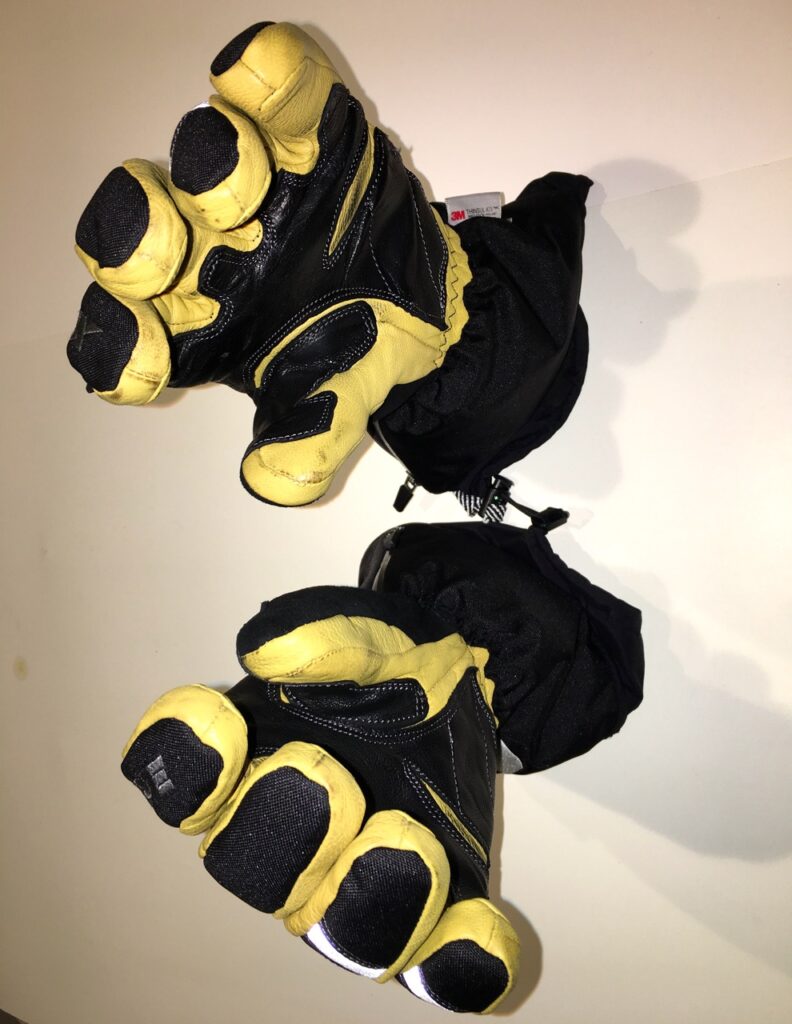Handy Anti-Cold Arsenal Includes Heated Gloves…
Related: How to Keep Your Feet Warm
For some snowmobilers it’s a toss up which gets colder, toes or fingers? For many newbies, it’s all three, so they need to read this post, and also check out my beginners tips.
In a recent article, I offered advice about how to buy good snowmobile boots to keep your feet warm while trail riding. Now it’s time to talk about keeping your digits toasty. There’s quite a menu of options. So stay tuned and don’t miss my comments about the best heated gloves on the market at the end of this article!
Hot Tips For Cold Hands – Hand & Thumb Warmers
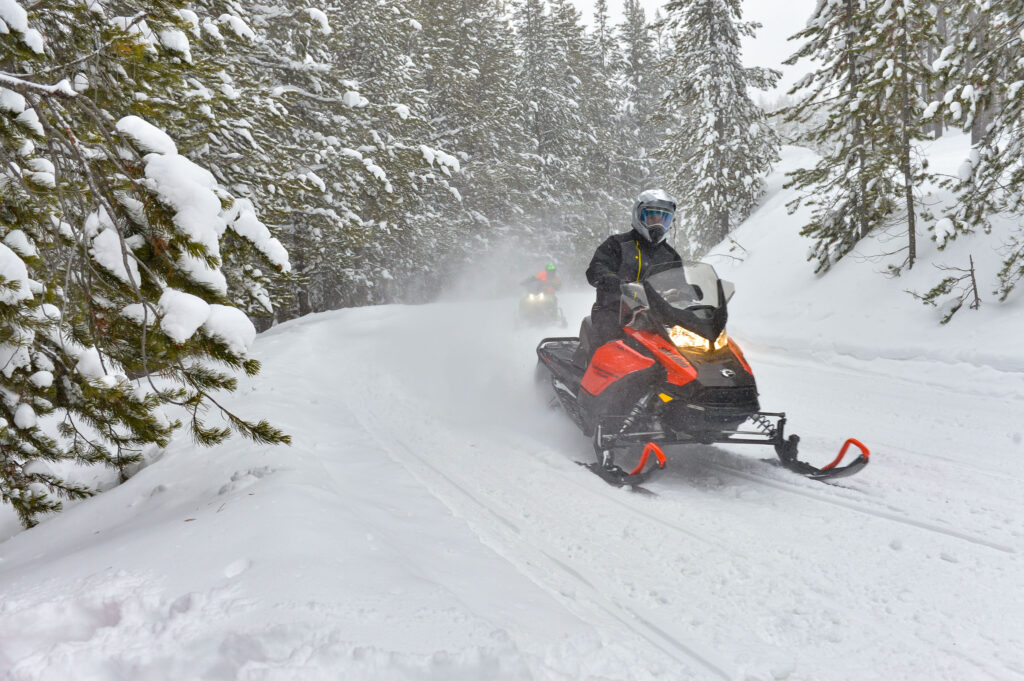
Most sleds today come with electrically heated handgrips as standard equipment. Plus a throttle thumb warmer. I’m still waiting for a heated brake lever!
Limitation #1
Generally these work well, but do have their limitations. The first is that they only provide heat when the sled is actually operating. And by that I don’t mean just running – it actually has to be moving to crank out the thermals.
Limitation #2
Second and because of this, they don’t provide instant heat. So it takes a while to build up. And meanwhile, your fingers can just about freeze off. What’s more, as soon as the machine is shut off, the heats stops. It’s amazing how quickly the handgrips and throttle thumb get cold again. And remember, leaving your sled running at a trail pit stop won’t keep the heat flowing!
Limitation #3
The third drawback of electric hand and thumb warmers is that they only provide contact heat. In other words, any part of your hands not touching them can still get mighty cold.
Limitation #4
The fourth downside is that the colder it is, the less effective hand and thumb warmers become. That’s both because their maximum output is restricted for liability reasons. And because they simply can’t compete on their own against exposure to deep-freeze temperatures.
Limitation #5
Then of course, there’s the ultimate limitation. If your electric hand and thumb warmers malfunction, you’re doomed to a frozen hands ride. And believe me, anyone who’s suffered that painful fate never wants to repeat it!
Hot Tips For Cold Hands – Improving Hand Warmer Effectiveness
Windshield Protection
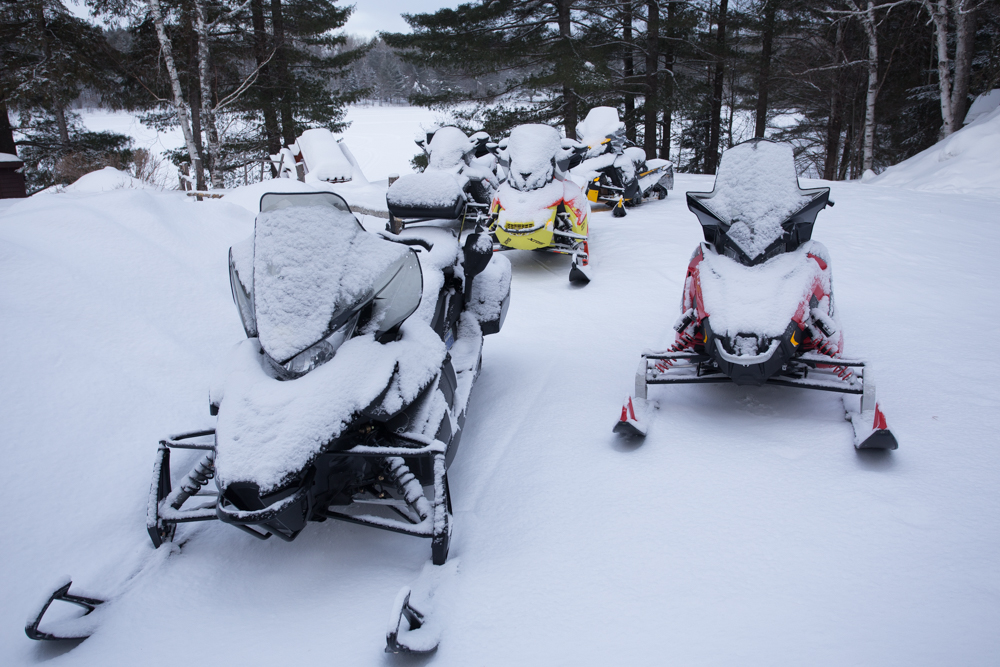
One good way to boost the effectiveness of your hand and thumb warmers is by blocking their exposure to wind chill. That starts with a getting the right windshield for trail riding. One that’s high and wide enough to deflect cold air away from your hands (head and body). This gives your hand and thumb warmers a fighting chance to do their job properly.
Handlebar Muffs
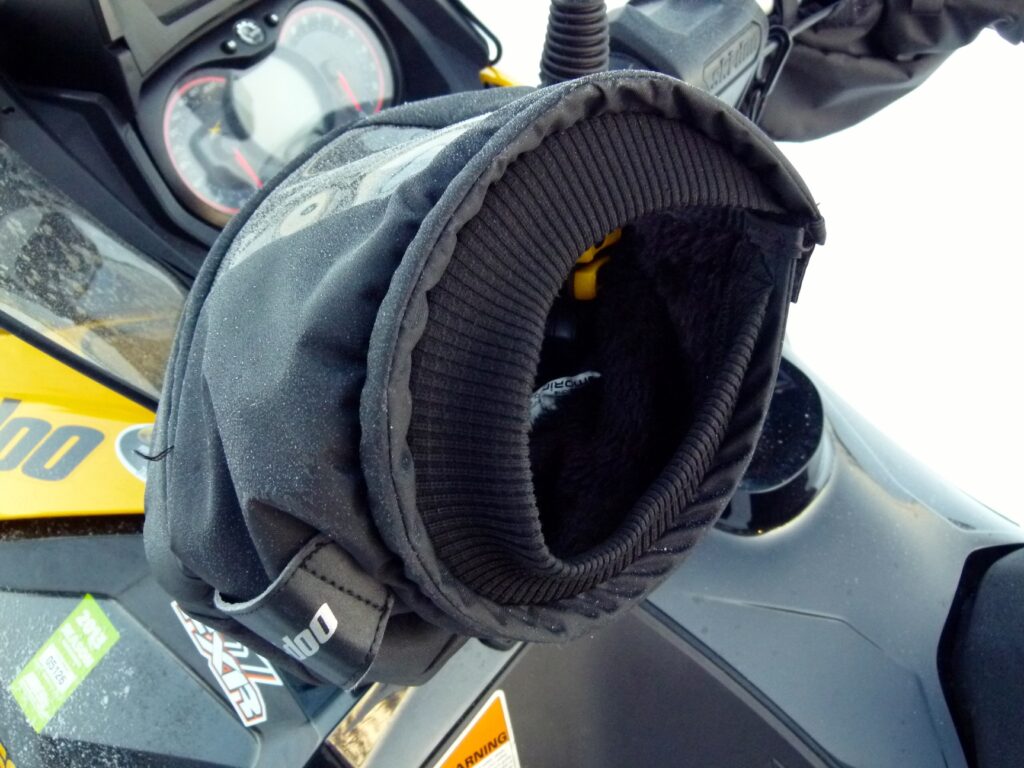
But if you really want to get the most from your hand and thumb heaters, install a pair of handlebar muffs. The best ones I’ve used are made by Ski-Doo. They create an enclosed environment around your hands that actually traps the handlebar heat inside the muff. So much so that I’m often able to ride with just half the heat setting I used to. They are also very easy to get my hands in and out of. And have clear top panels, so I can see the various handlebar controls.
Good Gloves
A high quality pair of right-sized snowmobile gloves with top-notch insulation will also help considerably. From the get-go, they keep your hands warmer. Sure, the handlebar heat may take longer to penetrate through their insulation. But good insulation also tends to retain the heat longer.
My advice is to get a pair that is also waterproof. Since moisture conducts cold fast, you want gloves that won’t get damp in wet snow, rain or freezing rain.
While mitts are generally warmer than gloves, they can also interfere with manual dexterity while riding and working the handle bar and throttle controls. At the very least, they take some getting used to.
However, I do carry a really good pair of Arctic-rated mitts in my snowmobile gear. This provides me with one more good hand warming option, just in case my handlebar heaters conk out. Or if I ever have to walk out or spend a night in the bush!
Keep Hands & Gloves Warm
If you start riding with cold hands, your electric warmers have an even tougher job to do. Same goes if you expose your bare hands to the cold while stopped along the trail. And the problem is only compounded if you leave your gloves sitting out in the cold at the same time. So if you’re not wearing them, try sticking your gloves inside the front of your jacket when outdoors. Or find someplace to warm them up when inside.
Hot Tips For Cold Hands – Other Hand Warming Solutions
Chemical Hand Warmers
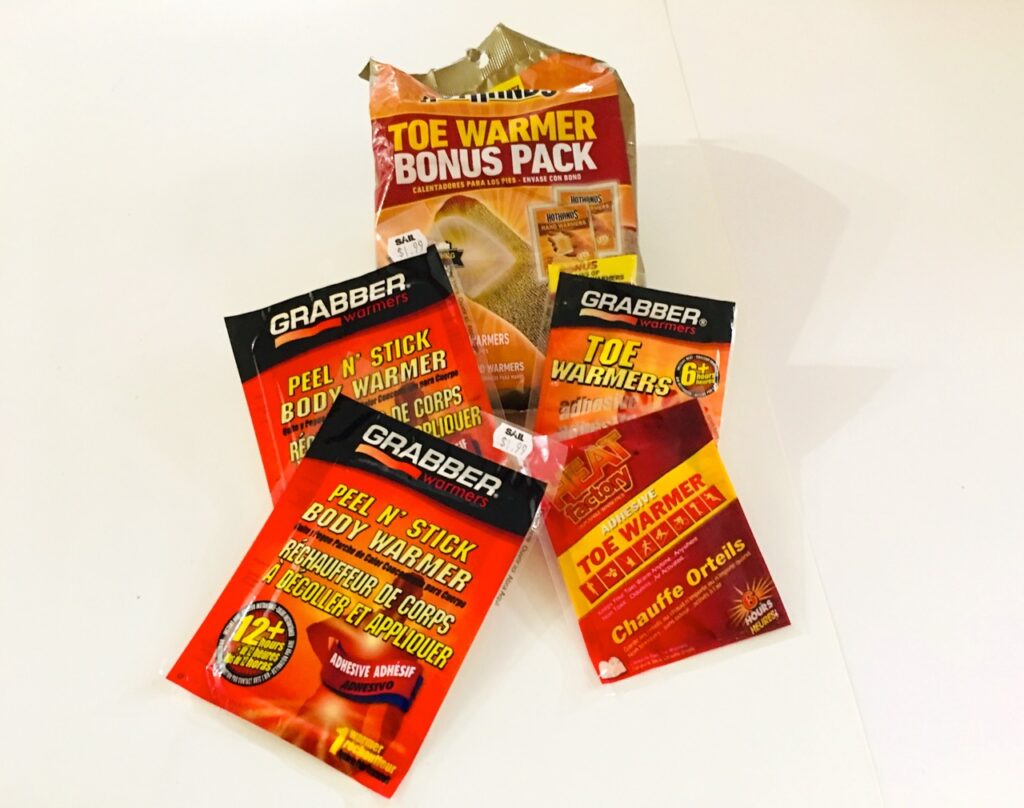
I’ve had limited success using chemical warmers to help heat my hands. In part, this is because my hands always seem to be moving while riding. Working the controls. Steering. Repositioning for cornering. And besides, how do you get a chemical warmer in contact with your fingers while wearing gloves?
So I’ve found they work best in mitts. Or by affixing adhesive toe warmers inside my gloves to warm the backs of my hands. But none of these options are entirely satisfactory for me.
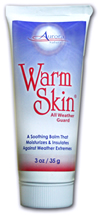 Warm Skin
Warm Skin
One trick that seems to improve hand warmth is called Warm Skin. Pro football players use it when playing in the cold. It provides a protective, non-greasy barrier cream that protects exposed skin. While it will never be your only defence against the cold, Warm Skin can be part of your arsenal.
Handlebar Insulation
I’ve never tried this one, but thought it should be included. To reduce the cold, some riders fill their handlebars with spray foam insulation. Others have tried placing a thin insulating tape between the handlebar and the heated grip to slow heat dissipation through the metal. It strikes me that both ideas must be executed carefully to avoid problems with the sled’s stock set up.
Hot Tips For Cold Hands – FXR Recon Heated Gloves
Last but not least are heated gloves. But don’t go cheap with this option. I’m sold on my pair of FXR Recon Heated Gloves. First let me say that these are top quality gloves. Well made, well insulated and waterproof. Good enough to stand on their own without their battery powered heat. In fact, I often wear them without using the batteries.
Battery Powered
Two lithium batteries power the Recon Heated Gloves. Each fits snuggly and unobtrusively in the cuff of a glove and claims to provide up to 5 hours of heat. I’ve found that this is a generous estimate. With deep cold temps and at high heat setting, 3 hours is likely more usual.
None the less, I always carry a second set of fully charged batteries inside my jacket to get me through those cold afternoons as well. I also extend battery life by sticking an adhesive chemical warmer inside each battery pocket. This keeps them warmer and provides longer life on each charge.
And, as Skip Wareham reminded me in a Facebook comment, mostly I only need to turn the heat on for a short time when starting to ride. That is, first thing on a cold morning or after stopping for lunch. Or for an extended trail break. After my hands heat up, they tend to stay warm. So I turn the gloves off to save battery life.
Comfy Warmth
Despite these provisos, I’m impressed with how well the FXR Recon Heated Gloves work. Their heating elements track around each separate finger on the backside of the glove. The provided heat is comfy, pervasive and quick without being too hot. They are a perfect complement to my handlebar warmers, which only heat the insides of fingers and palms.
A heat controller is located on the back of each glove. It provides 4 settings – high, medium, low and off. Perhaps the only downside is having to use a bare finger to change settings!
Conclusion
Just like keeping your feet comfortable while trail riding, keeping your hands warm requires some forethought and preparation. And having an arsenal of choices at your disposal to use either solo or in combo to overcome the cold.
The tips and advice in this blog are the opinions of the author, may not work in every situation and are intended only for the convenience and interest of the reader, who has the personal responsibility to confirm the validity, accuracy and relevancy of this information prior to putting it to their own use.

